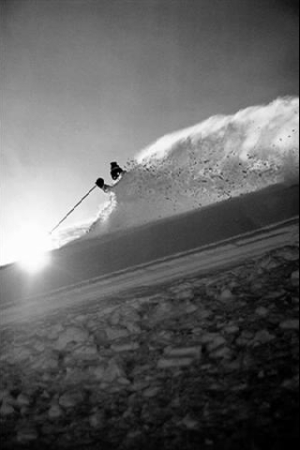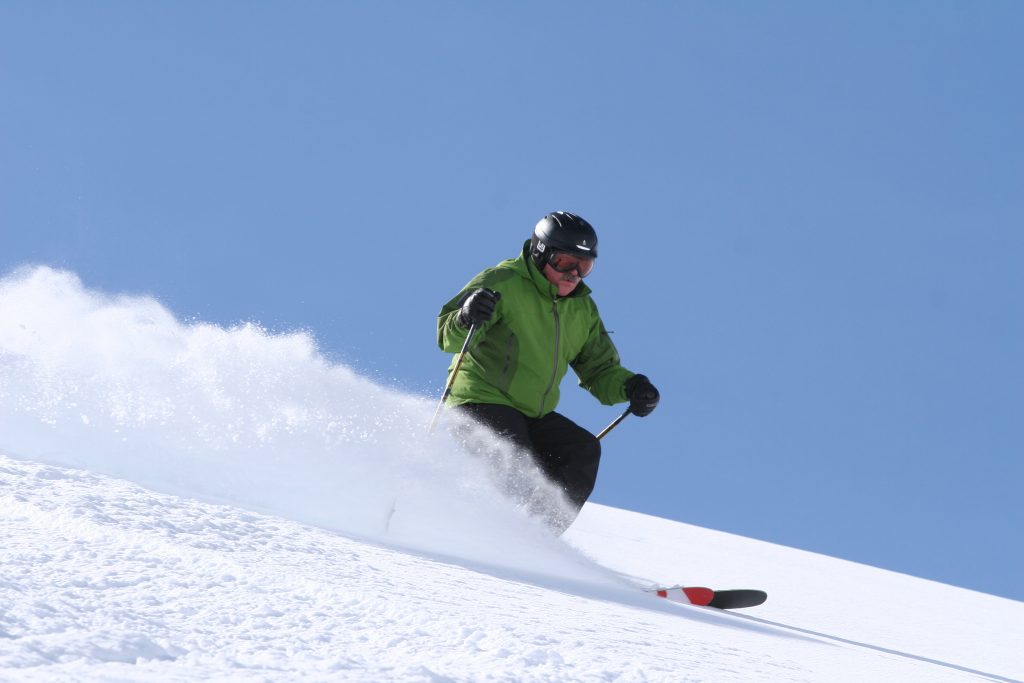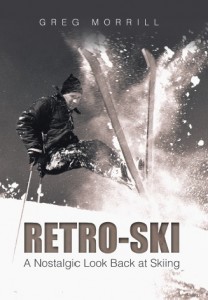For the past couple of columns I’ve been writing then-versus-now comparisons of learning to ski. First, it’s being able to make parallel turns, then second it’s learning to ski moguls. This week it’s the challenge of skiing powder!
Wait a minute, I heard someone say, isn’t powder what all skiers dream about? Isn’t that why you get up at 5:00am to get those first tracks? Well, yes, but when many of us were learning to ski, our first powder experience wasn’t necessarily a dream come true.
I’m not sure it was my first powder experience, but I recall a day at Wildcat when I was in college. I had been getting pretty cocky about my skiing and probably would have claimed to be an expert. That day there was 10-12 inches of new snow and it wasn’t that light blower powder. Let’s just say it didn’t go well. I spent a lot of time getting a close look at that powder and wondering why do people think this is so great?
Well, the good news is that once you get the hang of it, it becomes as natural as walking. In other words, unlike moguls which I think require repeated practice, you can enjoy the first snow day of the season!
This season has provided plenty of powder days and it’s snowing as I’m writing this. It’s been quite a few years since we’ve had a season with this much snow (and less of the dreaded “R” word) so take advantage of it.
How do you learn to ski powder? One of the most famous powder skiing instructors, Junior Bounous, who is still skiing powder at age 99 gave the following advice: “point them straight down the hill until you reach terminal velocity and then start to turn!” Well, OK, maybe it isn’t quite that simple. But you do want to ski in the fall line, not across it. Similarly turns should be rounder and not as sharp. Let the snow help you control your speed.
A common problem for intermediates is skiing with their skis apart in powder. Keeping the skis closer together lowers the chance that each ski goes its own way. One of the basics of skiing parallel is weight on the outside ski and this still applies in powder. You can get away with some weight on the inside ski when they’re together, but when they’re apart the inside ski can catch and give you a close look at the powder.
The biggest change between skiing powder in the Retro-Ski days and today is in ski design. Between wider skis and the addition of rocker, skiing powder has gotten a lot easier. In my opinion this is particularly true once the powder gets tracked, a state sometimes referred to as “chowder.” With narrow skis and no rocker, chowder was a lot of work and no fun. With modern skis it’s much less work and can even be enjoyable!
The new skis have even changed the way we ski powder. With the old equipment we skied “in” the snow while the new equipment allows you to ski “on” the snow. Watch any of today’s big mountain ski movies and they are arcing high speed turns on the snow surface! A few years ago on a heli-skiing trip, one fellow fell and lost a ski. The ski headed down the slope on the surface and continued for quite a distance before coming to a halt!
Which brings us to last week’s trivia question, what are powder cords? Peter Koekkoek had the answer:
“Powder cords were strings or pieces of fabric we attached to bindings so that we could find our skis when they came off in deep powder. I remember searching for my skis on a powder day years ago under the lift on Grouse Mountain, at Beaver Creek. A snowboarder overhead called me a “one plank wanker”.
Fatter, rockered skis seem to have obviated the need for powder cords these days.”
Peter Penndorf also had the answer. Peter just got back from Alta and says you don’t see as many powder cords there as you used to. It sounds like Peter Koekkoek’s theory may be correct about wider, rockered skis making the cords less necessary.
Peter Penndorf also commented on my favorite practice moguls, “Lower National—we used to call it Ego Alley—after fighting our way down the VW sized bumps on National—needed it to recover our ego!”



Leave a Reply